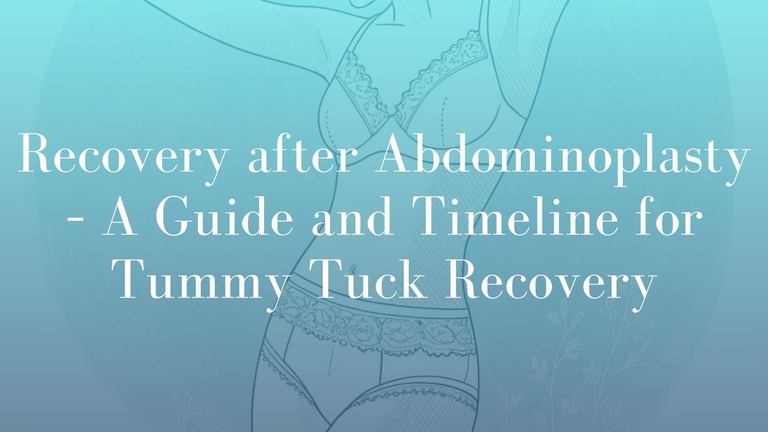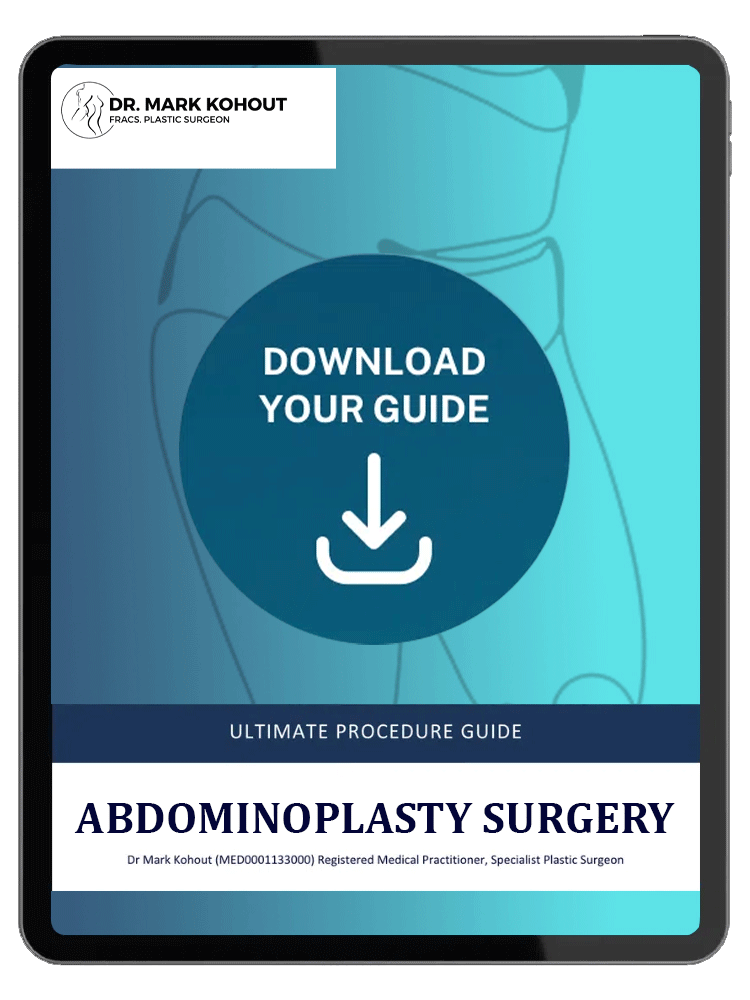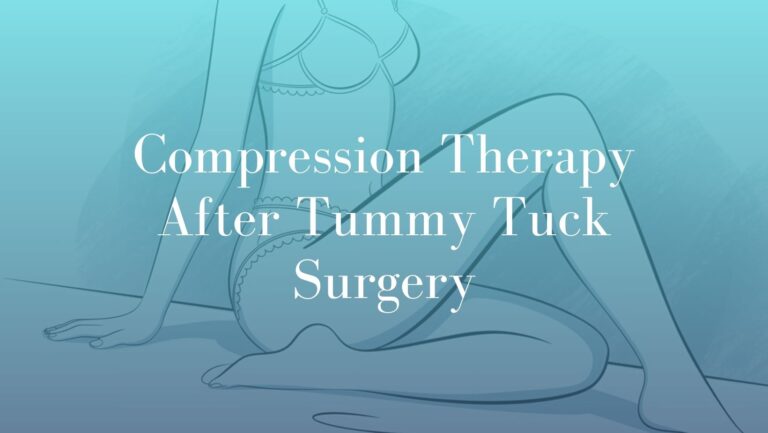Your Guide to Abdominoplasty: What to Expect Before, During, and After Tummy Tuck Surgery
Abdominoplasty, commonly referred to as a tummy tuck, is an elective cosmetic procedure designed to remove excess skin and fat from the abdominal area. For many patients, it also involves tightening the abdominal muscles, supporting a firmer and more contoured midsection. While it is not intended for weight loss, a tummy tuck/abdominoplasty can significantly alter body contours, especially for those who have undergone substantial weight loss or have experienced changes following pregnancy.
To make an informed decision about abdominoplasty, it’s essential to understand its purpose, the commitment it requires, and the benefits it can offer. Here’s a guide on what to expect before, during, and after surgery, along with tips to help you through each stage of recovery.
Why Undergo an Abdominoplasty?
Individuals choose abdominoplasty for various reasons. While each patient’s goals differ, the most common motivations include:
- Post-Weight Loss Contouring: After significant weight loss, excess skin and residual fat deposits can create discomfort and even health issues. Abdominoplasty can remove this excess skin and help refine the body’s contour.
- Post-Pregnancy Repair: Pregnancy can stretch abdominal muscles and skin in a way that can’t always be corrected by exercise alone. Many mothers choose abdominoplasty/tummy tuck to restore their pre-pregnancy midsection.
- Targeting Resistant Fat: Some fat deposits around the abdomen may be unresponsive to diet and exercise, making them suitable for removal during abdominoplasty.
- Reducing Skin Irritation: Loose skin can cause chafing, rashes, and other discomforts. A tummy tuck can remove the excess skin and address comfort.
A tummy tuck can provide the desired results, but it’s important to approach the procedure with realistic expectations. For those in Sydney, consulting with a specialist plastic surgeon, such as Dr. Mark Kohout, can clarify the possible benefits, potential limitations, and unique factors related to your body’s needs.
Preparing for Surgery
Preparation plays a critical role in a successful surgery and recovery. Planning ahead will help support your recovery as anticipated:
- Quit Smoking and Drinking: Both smoking and alcohol can hinder the body’s natural healing process by reducing blood flow and increasing the risk of complications. Surgeons typically recommend abstaining from these for at least four weeks before and after surgery.
- Plan for Assistance: Arrange for someone to drive you home after surgery and to help around the house during the first few days post-operation. A support system is particularly valuable if your tummy tuck is part of a more extensive abdominal and breast procedure.
- Create a Comfortable Recovery Area: Set up a comfortable recovery space at home with pillows, water, medication, and other essentials within arm’s length. Stock up on easy-to-prepare, nutritious meals, and bring frequently used items within easy reach.
- Gather Loose, Comfortable Clothing: Loose-fitting clothing, a compression garment (provided by your surgeon), and supportive yet comfortable undergarments can reduce discomfort and aid in managing swelling.
Abdominoplasty Surgery Before and After Images
Photo disclaimer: Each surgical procedure produces unique outcomes influenced by factors such as body composition, skin tone, laxity, age, and genetics. The before-and-after photographs displayed are of actual patients who have consented to having their images displayed and are provided for informational purposes only. These outcomes are specific to the individuals shown and may not be representative of all patients. Surgical procedures carry risks, and results may vary. A consultation with your surgeon will provide more personalised information about potential outcomes and risks.
The Abdominoplasty Procedure and Immediate Recovery
During the procedure, Dr Kohout will make incisions, remove excess skin and fat, and may tighten the abdominal muscles for a uniform, and firmer appearance. Depending on your specific needs, your surgeon may choose a full or skin only abdominoplasty. After surgery, a compression garment is applied to reduce swelling and support the abdomen’s new shape.
The initial recovery can be challenging, as this is when your body is at its most vulnerable. Swelling, bruising, and discomfort are normal during this stage, but each symptom will improve gradually.
Understanding the Recovery Timeline
Healing after an abdominoplasty/tummy tuck occurs in stages, with milestones at each phase marking gradual improvements in mobility, comfort, and energy levels. Follow Dr Kohout’s instructions carefully to support a gradual and uneventful recovery.
➔ Week 1: Rest, Rest, and More Rest
The first week is dedicated to rest and minimizing movement to allow your body’s healing mechanisms to function optimally. Swelling and bruising are common during this time, and pain medications will be essential to manage discomfort.
Tips for Week 1:
- Wear the Compression Garment: This helps reduce swelling and protects the abdomen, providing essential support for initial healing.
- Avoid Strenuous Movements: Movements like bending, lifting, or twisting could place stress on the incision and slow healing. Limit activity to essential movements only, and rest as much as possible.
- Stay Hydrated and Eat Light: Staying hydrated supports digestion and circulation, both of which aid recovery. A light, nutritious diet with lean proteins, fruits, and vegetables will support your body’s need for essential nutrients.
➔ Week 2: Gradually Increasing Mobility
By the second week, many patients begin feeling a bit more mobile, though activity should still be minimal. Swelling and bruising will start to subside gradually, and gentle walks around the house can aid circulation and reduce the risk of blood clots.
Tips for Week 2:
- Continue Wearing the Compression Garment: Keeping up with the compression garment will help manage any lingering swelling and support the abdomen.
- Limit Activity: You may feel better, but avoid heavy lifting or strenuous activities. Short, gentle walks are beneficial, but avoid any movement that places stress on the abdomen.
- Watch for Signs of Infection: Any signs of excessive redness, drainage, or fever should prompt an immediate call to Dr Kohout.
➔ Weeks 3-4: Building Strength
During the third and fourth weeks, the majority of swelling and bruising should have dissipated. Patients often feel more like themselves, and light activities may be resumed with caution. However, the abdomen will still be sensitive, and it’s important to avoid any abdominal-targeting exercises unless advised by Dr Kohout.
Tips for Weeks 3-4:
- Scar Management Begins: Scar care treatments, such as silicone sheets, may help reduce the appearance of scars, but consult with Dr Kohout on when it’s safe to begin.
- Continue a Balanced Diet: A nutrient-rich diet supports tissue repair, so continue focusing on lean protein, leafy greens, and whole grains.
- Avoid Direct Sun Exposure to Incision Sites: Exposure to UV rays can darken scars, so protect your incision area by avoiding sun exposure or using high SPF sunscreen.
➔ Weeks 5-6: Gradual Return to Exercise
Around this time, many patients feel ready to reintroduce low-impact exercise, such as light walking or gentle stretching. It’s critical, however, to avoid any intense or high-impact activities that could stress the abdominal area. For a more detailed breakdown of safe activities and timelines, read our guide on returning to exercise after abdominoplasty.
Tips for Weeks 5-6:
- Increase Activity Slowly: Resume light activities and exercise gradually, but avoid heavy lifting or any exercise that places direct pressure on your core.
- Stay Consistent with Scar Care: Regular application of recommended scar treatments will help minimize visibility over time.
- Listen to Your Body: It’s tempting to jump back into full routines, but healing is an individualized process. Your body will signal if it’s being pushed too far.
➔ Weeks 7-8: Return to Normal Activities
By weeks seven and eight, most patients feel close to resuming regular activities, though it’s essential to still avoid exercises that heavily impact the core until Dr Kohout gives approval. Swelling should be minimal, and incisions will continue to fade over time.
Tips for Weeks 7-8:
- Reintroduce Core Exercises with Caution: If approved, start with gentle core exercises and stop if you experience discomfort.
- Stay Active with Low Impact: Light to moderate exercises are encouraged to maintain your shape, but avoid high-impact moves until cleared by Dr Kohout.
- Continue Scar Care Routine: Scars will continue to improve in appearance over the coming months, so remain consistent with scar care.
➔ Months 3-6: Long-Term Recovery and Final Results
Complete recovery from an abdominoplasty/tummy tuck can take up to six months, with final results appearing as residual swelling completely subsides. Maintaining a balanced lifestyle with regular exercise, hydration, and a nutritious diet will support long-lasting results.
Tips for Long-Term Recovery:
- Prioritize Sun Protection: Continued sun exposure can darken scars, so cover your incisions when outdoors or apply sunscreen with a high SPF.
- Stay Active and Hydrated: Proper hydration and regular physical activity help maintain muscle tone and general health.
- Be Patient: Full recovery takes time, and everyone’s healing process is unique. As scars mature and swelling subsides, the full results of your tummy tuck will become more apparent.
General Tips for a Steady Recovery
- Follow Dr Kohout’s Instructions: Post-operative instructions are tailored to support optimal outcomes. Carefully adhere to all advice provided.
- Stay Positive: Recovery is a gradual process. A positive outlook can make a big difference in your overall experience. Keeping the long term goal in mind can help de-emphasise minor setbacks.
- Seek Support: Family, friends, or support groups can provide emotional and physical assistance during the recovery journey.
- Avoid Strenuous Activities: Even if you feel ready, avoid strenuous exercise until cleared to do so by Dr Kohout. Overexerting early can prolong recovery and increase risks.
When to Contact Your Surgeon
Although rare, certain signs during recovery require immediate medical attention. Contact Dr Kohout if you experience:
- Persistent, unmanageable pain
- Fever, chills, or signs of infection
- Excessive bleeding or unusual discharge
- Difficulty breathing or increased swelling around the incision
Choosing the Right Surgeon for Your Abdominoplasty
Choosing an experienced, qualified surgeon is crucial to achieving your desired outcome and a safe recovery. For those in Sydney, we recommend consulting with a highly respected plastic surgeon, like Dr. Mark Kohout. With years of training in Australia and the UK, Dr. Kohout has extensive experience in abdominoplasty and offers a tailored approach to meet each patient’s unique goals.
His approach is rooted in patient safety and satisfaction, fostering thorough consultations and personalized aftercare guidance. This level of commitment helps patients feel confident in their choice of surgeon and provides support through every stage of the recovery process.
Understanding Abdominoplasty Surgery
The journey of abdominoplasty, from preparation to full recovery, is a commitment that requires patience, adherence to your surgeon’s instructions, and self-care. Many patients find it helpful to review our FAQs About Abdominoplasty in Australia for answers to common concerns. Every step of recovery is essential to achieving the best results, and by following this guide, you can help make your healing process as uneventful as possible.
Remember that every person’s recovery journey is unique-focus on your own progress and avoid comparing your experience to others. With time, dedication to self-care, and proper guidance, you’ll be able to fully appreciate the outcomes of your abdominoplasty.
By choosing a reputable surgeon, preparing carefully, and taking recovery day by day, you’re investing yourself and that can positively impact your outlook. Patience is key, and every day of careful recovery brings you closer to the results you’ve envisioned.
Further Reading about Abdominoplasty Surgery with Sydney Specialist Plastic Surgeon Dr Mark Kohout
- Read more about Dr. Mark Kohout’s Abdominoplasty Tummy Tuck Procedure
- Read more about Dr. Mark Kohout’s Body Surgery Pricing Page
- Read more about Dr. Mark Kohout’s Different Types of Abdominoplasty – Tummy Tuck Surgeries Blog
- Read more about Dr. Mark Kohout’s Compression Therapy After Abdominoplasty / Tummy Tuck Surgery Blog
- Read more about Dr. Mark Kohout’s Diet After Abdominoplasty / Tummy Tuck: What to Eat when Blog
Related Blog Posts
Diet After Abdominoplasty / Tummy Tuck:…
If you have just had a tummy tuck surgery (also called abdominoplasty), you are probably looking forward to getting back to your regular routine again. While the recovery process can take…
Techniques in Tummy Tuck – Abdominoplasty:…
Popular Abdominoplasty Techniques in 2025 The field of tummy tuck – abdominoplasty surgery continues to advance, offering patients diverse options. In this blog, Sydney Plastic Surgeon Dr Mark Kohout will discuss some of the…
Compression Therapy After Abdominoplasty / Tummy…
Abdominoplasty, commonly referred to as a tummy tuck, is a well-known cosmetic operation focused on enhancing the look of the stomach. A tummy tuck surgery in Sydney can result in…








